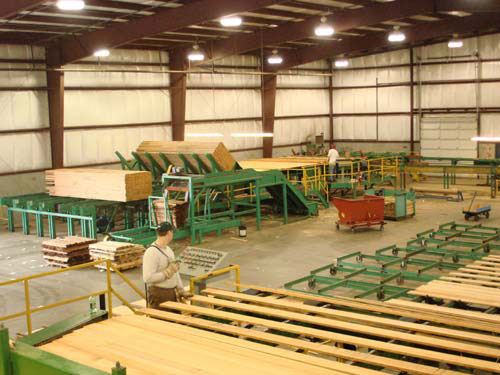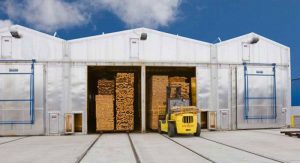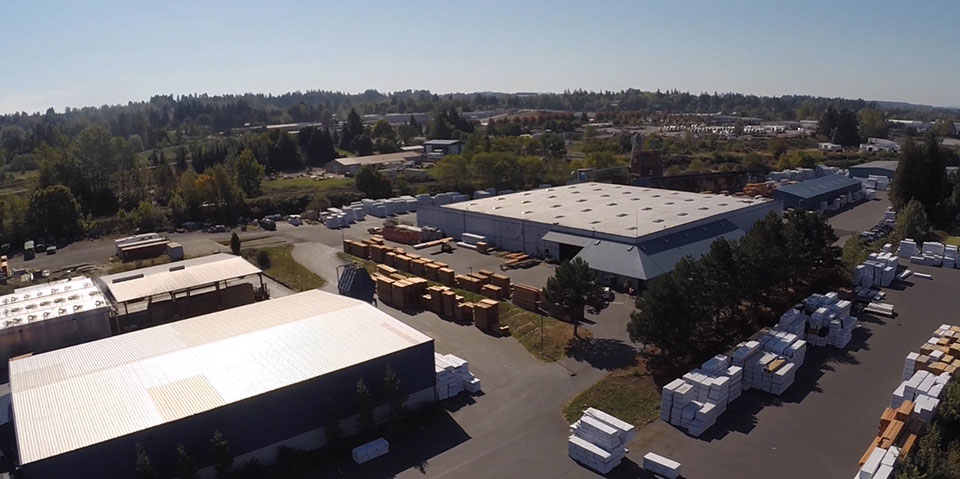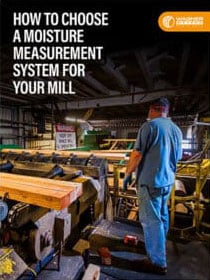Carl Diebold Lumber Cuts Energy Costs
 Founded in 1945 by Carl Diebold and located in Troutdale, Ore., the Carl Diebold Lumber Company (CDLC), a third-generation family business, processes mostly clear and higher grade lumber products that they don’t actually sell to customers.
Founded in 1945 by Carl Diebold and located in Troutdale, Ore., the Carl Diebold Lumber Company (CDLC), a third-generation family business, processes mostly clear and higher grade lumber products that they don’t actually sell to customers.
“We don’t have any product sales,” says Dave Smith, plant manager. “All this wood we’re processing belongs to somebody else. Lumber wholesalers, for example, will buy rough green material from a sawmill and bring it to us. They specify what they want us to do with it.”
In order to meet the stringent specifications issued by their customers, CDLC takes extra steps to ensure the upper-grade materials they process are of the highest quality. One of these steps involves using a computer-driven in-kiln moisture measurement system.
In 2010, TimberLine magazine featured CDLC and its then newly-installed in-kiln moisture measurement system. After six years of using the MC4000 in-kiln system, we checked in with CDLC to see if it was still living up to expectations.
In-Kiln Moisture Measurement

CDLC installed three dry kilns in 2005 to keep pace with production at a remanufacturing plant built in 1989. Smith says that even before deciding on which kiln to install, they chose the MC4000 In-Kiln Moisture Measurement System from Wagner Meters – a worldwide manufacturer of moisture meters and industrial moisture measurement systems.
“In order to produce high-quality products, knowing the moisture content (MC) throughout the drying process is very important. If you overdry the wood, you can destroy it,” Smith declares.
“It’s also key that the material not be wet, that it be the right MC when it comes out of the kiln, otherwise it won’t mill properly and we won’t get a good, quality finish. Also, once the wood gets installed in its final use, if it’s too wet, it will start shrinking and cause problems.
“That’s why the MC4000 is so critical. For the past six years, it has provided us with consistently accurate information about the wood’s MC,” he adds.
Economics is another factor in carefully monitoring MC.
“If you buy a 2×4 at your local big box store that’s full of knots, you’re talking about $500 to $600 per 1,000 board feet. Most of the materials we’re producing are clears and other high grades that range from $4,000 to $5,000 per 1,000 board feet. So we can’t afford to destroy any wood in the drying process because it gets very expensive.”
Smith says another economic advantage of the MC4000 is that it has saved CDLC time, money, and energy costs by shortening their drying schedules. Instead of drying lumber in seven days, the MC4000 allows operators to monitor the process and make adjustments as quickly as the wood is drying.
“We can shorten that time to maybe five or six days. So we can take a day or two’s worth of energy consumption out of the equation, which is fairly high.
“We run a Hurst gas-powered boiler, so we have a lot of gas we’re pumping in there to heat the water to generate the steam. And then, kilns have large fans in them which consume a fair amount of electricity. So by shortening that time, we save time, energy, and money,” Smith explains.
Minimizes “Hot Checks”
The in-kiln moisture measurement system also minimizes “hot checks.” Instead of having to conduct several manual checks during a charge, which requires cooling down the kilns, operators do one check near the end of the drying schedule and a final one at the end.
“By having the in-kiln system, we don’t have to shut the kiln down several times, open it up, and lose all that heat. We rely on the Wagner to tell us when the wood reaches 10% to 12% MC. It’s very costly to bring the kilns back up to 180 degrees. By eliminating additional checks, we’re not losing that heat. This saves us energy,” he says.
CDLC processes mostly Douglas fir, western red cedar, and occasionally hemlock. These species present some drying challenges, especially the western red cedar and, to a lesser degree, the hemlock.
Because cedar is a very delicate species to dry, Smith says that if they’re too aggressive drying it, such as getting it too hot, too fast, they’ll end up with cell collapse in the wood.
As a result of the cedar’s super-sensitivity to changes in temperature, CDLC makes adjustments in the schedule as the MC goes down.
“We can increase the kiln temperature by using the Wagner system because it tells us in real time where that moisture is. So we can make those adjustments sooner than later. Again, this will shorten the time in the kiln and lower our costs,” Smith says.
Computer Controlled
Each kiln has its own MC4000 measurement system with one computer running all three. American Wood Dryers’ Drystar Computer Control System, which supplied the kilns, takes the information provided by the MC4000 and tells the kilns what to do – heat up or cool down, adjust the dry bulb or wet bulb, and adjust fan speed.
Two of the kilns are single track and hold about 60,000 board feet per charge. The other is a double track kiln and holds about 140,000 board feet per charge.
The kilns dry about 1.4 million board feet monthly, while the plant processes upwards of 3.2 million board feet per month.
As most kiln drying operators will attest, kiln drying is an art requiring skill and technical knowledge. But having a sound in-kiln moisture measurement system working hand-in-hand with a solid computer system makes it much easier, while saving time, energy, and money.
CDLC kiln operators can attest to that. Looking back over the past six years, they say their in-kiln system is still proving its worth.

Carl Diebold & Company saves time, energy, and money with the Wagner Meters MC4000 In-Kiln Moisture Measurement System
Tony Morgan is a senior technician for Wagner Meters, where he serves on a team for product testing, development, and also customer service and training for moisture measurement products. Along with 19 years field experience for a number of electronics companies, Tony holds a B.A. in Management and his AAS in Electronics Technology.
Last updated on December 4th, 2020



